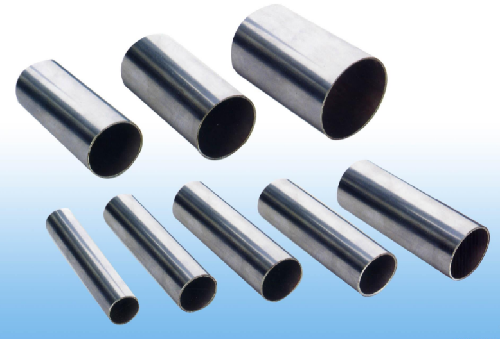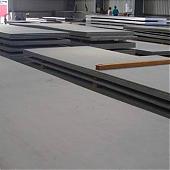Which is safer, 304 or 316 stainless steel?

Which is safer, 304 or 316?
Nowadays, we are safer when eating. Many families are now using stainless steel tableware. The biggest advantage of stainless steel is that it will not rust and can prevent the growth of bacteria. So 304 and 316...
Nowadays, we are safer when eating. Many families are now using stainless steel tableware. The biggest advantage of stainless steel is that it will not rust and can prevent bacterial growth. So which one is safer, 304 or 316?
Which one is safer, 304 or 316?
1. 316 stainless steel is safer. Because 316 stainless steel is a high-grade stainless steel with better corrosion resistance and heat resistance. It contains 2-3% molybdenum, giving it better corrosion resistance in acidic environments and high temperatures. The addition of molybdenum can improve the corrosion resistance of stainless steel, making it widely used in situations that require high corrosion resistance, such as marine environments, chemical industries, and medical equipment.
2. In the marine environment, chloride ions are one of the main corrosion factors. 304 stainless steel is prone to corrosion in chlorine-containing environments, while 316 stainless steel can effectively resist the erosion of chlorine ions due to the addition of molybdenum, so it is more suitable for use in marine environments.
3. In the chemical industry, it is often necessary to handle various acidic solutions and corrosive substances. 304 stainless steel has poor corrosion resistance in acidic environments and is prone to corrosion and damage. Due to the addition of molybdenum, 316 stainless steel can maintain good corrosion resistance in acidic environments, so it is more suitable for use in the chemical industry.
4. In medical equipment, materials are required to have good corrosion resistance and biocompatibility. 316 stainless steel is widely used in the manufacturing of medical equipment, such as surgical instruments, implants, etc. due to its excellent corrosion resistance and biocompatibility.
5. 304 stainless steel is a general-purpose stainless steel with good corrosion resistance and heat resistance. It has good corrosion resistance at normal temperatures and is suitable for most general purposes. However, 304 stainless steel has poor corrosion resistance in high temperatures and acidic environments. This is because 304 stainless steel contains a high chromium content, but lacks the addition of other alloying elements, resulting in insufficient corrosion resistance in some special environments.
6. 316 stainless steel is superior to 304 stainless steel in terms of corrosion resistance and heat resistance. Therefore, 316 stainless steel is safer in some special environments. But under general use, 304 stainless steel also has good performance and can meet most needs. The choice of material should be determined based on the specific use environment and needs. If there are higher temperatures or acidic substances in the use environment, or higher requirements for corrosion resistance, it is recommended to choose 316 stainless steel. For general purposes, 304 stainless steel can already meet the needs.
Nowadays, we are safer when eating. Many families are now using stainless steel tableware. The biggest advantage of stainless steel is that it will not rust and can prevent the growth of bacteria. So 304 and 316...
Nowadays, we are safer when eating. Many families are now using stainless steel tableware. The biggest advantage of stainless steel is that it will not rust and can prevent bacterial growth. So which one is safer, 304 or 316?
Which one is safer, 304 or 316?
1. 316 stainless steel is safer. Because 316 stainless steel is a high-grade stainless steel with better corrosion resistance and heat resistance. It contains 2-3% molybdenum, giving it better corrosion resistance in acidic environments and high temperatures. The addition of molybdenum can improve the corrosion resistance of stainless steel, making it widely used in situations that require high corrosion resistance, such as marine environments, chemical industries, and medical equipment.
2. In the marine environment, chloride ions are one of the main corrosion factors. 304 stainless steel is prone to corrosion in chlorine-containing environments, while 316 stainless steel can effectively resist the erosion of chlorine ions due to the addition of molybdenum, so it is more suitable for use in marine environments.
3. In the chemical industry, it is often necessary to handle various acidic solutions and corrosive substances. 304 stainless steel has poor corrosion resistance in acidic environments and is prone to corrosion and damage. Due to the addition of molybdenum, 316 stainless steel can maintain good corrosion resistance in acidic environments, so it is more suitable for use in the chemical industry.
4. In medical equipment, materials are required to have good corrosion resistance and biocompatibility. 316 stainless steel is widely used in the manufacturing of medical equipment, such as surgical instruments, implants, etc. due to its excellent corrosion resistance and biocompatibility.
5. 304 stainless steel is a general-purpose stainless steel with good corrosion resistance and heat resistance. It has good corrosion resistance at normal temperatures and is suitable for most general purposes. However, 304 stainless steel has poor corrosion resistance in high temperatures and acidic environments. This is because 304 stainless steel contains a high chromium content, but lacks the addition of other alloying elements, resulting in insufficient corrosion resistance in some special environments.
6. 316 stainless steel is superior to 304 stainless steel in terms of corrosion resistance and heat resistance. Therefore, 316 stainless steel is safer in some special environments. But under general use, 304 stainless steel also has good performance and can meet most needs. The choice of material should be determined based on the specific use environment and needs. If there are higher temperatures or acidic substances in the use environment, or higher requirements for corrosion resistance, it is recommended to choose 316 stainless steel. For general purposes, 304 stainless steel can already meet the needs.
Related Products

Factory Introduction
Decorative Stainless Steel Metal Mesh: Where Architectural Art Meets Industrial Design
18 Gauge Sheet Metal Thickness
Contact Us